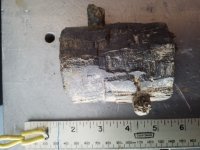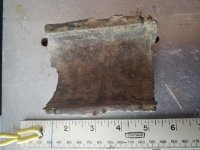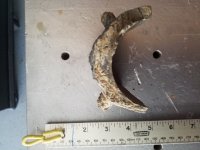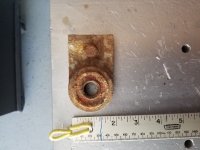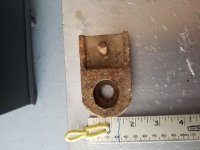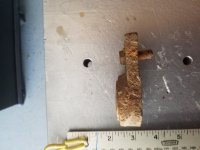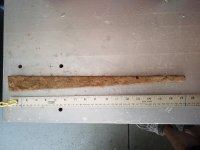invent4hir
Bronze Member
- Aug 1, 2017
- 1,801
- 2,748
- 🏆 Honorable Mentions:
- 3
- Detector(s) used
- Whites V3i & DFX
- Primary Interest:
- All Treasure Hunting
All, need help IDing and dating the 3 finds shown below. They were found near a site that was a old tavern in the 1800s, which later became a farm in the early 1900s, which was later developed into suburban housing. None have any kind of identifying marks. The first 3 pictures show what I think could be a lead water pipe. While I've dug lead water pipes before, I don't recall any that looked like they were homemade like this one (note the layered exterior). The next 3 show what could be door hardware; possibly aluminum. The last is one of 3 similar iron pieces found within about 6 feet of each other. Coming in at about 17" long and 3/16" thick, part of farm implement was the first thing that came to my mind.
Thanks-in-advance for helping, as all 3 will be donated to a local historical society for a display they're putting together.
Thanks-in-advance for helping, as all 3 will be donated to a local historical society for a display they're putting together.


